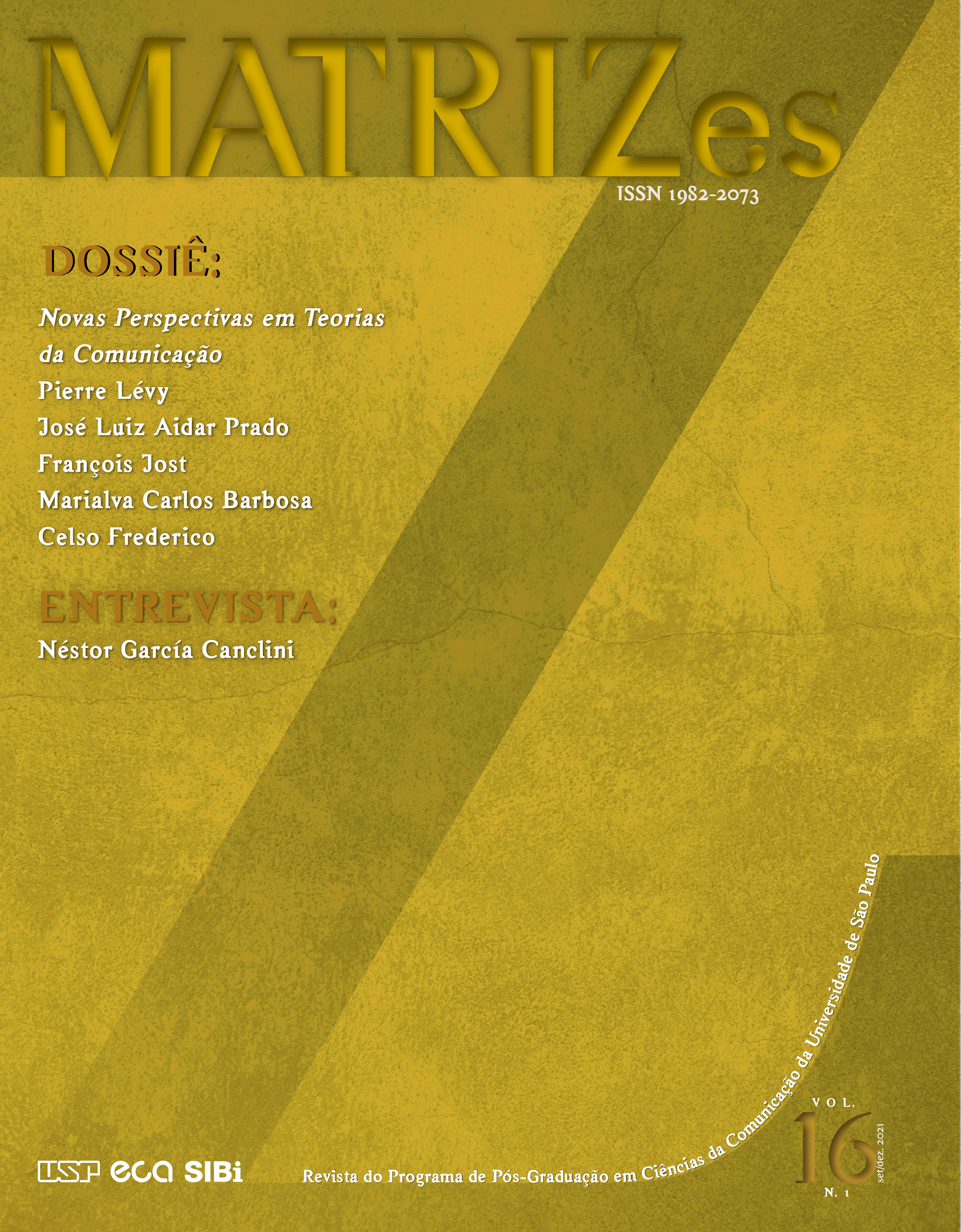IEML: rumo a uma mudança de paradigma na Inteligência Artificial
DOI:
https://doi.org/10.11606/issn.1982-8160.v16i1p11-34Parole chiave:
Inteligência artificial, Código semântico, Inteligência coletiva, MetaLinguagem da Economia da InformaçãoAbstract
O objetivo deste ensaio é apresentar uma visão geral das limitações da Inteligência Artificial (IA) contemporânea e propor uma abordagem para superá-las com uma metalinguagem semântica computável. Proponho que a IA adote um modelo computável e univocal da linguagem humana, a MetaLinguagem da Economia da Informação, um código semântico de minha própria invenção que tem o poder expressivo de uma linguagem natural e a sintaxe de uma linguagem regular. Isso pode abrir novos caminhos para a IA criar uma sinergia entre a democratização do controle de dados e o aprimoramento da inteligência coletiva.
Downloads
Riferimenti bibliografici
Berners-Lee, T. (1999). Weaving the Web. Harper.
Bush, V. (1945, julho). As we may think. Atlantic Monthly.
Chomsky, N. (1957). Syntaxic structures. Mouton.
Chomsky, N., & Schützenberger, M.-P. (1963). The algebraic theory of context-free languages. In P. Braffort & D. Hirschberg (Eds.), Computer Programming and Formal Languages (pp. 118-161).
Chomsky, N. (2000). New horizons in the study of language and mind. Cambridge UP.
Engelbart, D. (1962). Augmenting human intellect [Relatório técnico]. Stanford Research Institute.
Ernst, D. (2020). AI research and governance are at a crossroads. CIGI Online. https://www.cigionline.org/articles/ai-research-and-governance-are-crossroads/
Garcez, A. A., & Lamb, L. C. (2020). Neurosymbolic AI: The 3rd Wave. https://arxiv.org/pdf/2012.05876.pdf
Kripke, S. (1980). Naming and Necessity. Blackwell.
LeCun, Y., Bengio, Y., & Hinton, G. (2015). Deep learning. Nature, 521, 436-444. https://doi.org/10.1038/nature14539
Lévy, P. (1986). Analyze de contenu des travaux du Biological Computer Laboratory (BCL). Cahiers du CREA, 8, 155-191.
Lévy, P. (1986). L’Œuvre de Warren McCulloch. Cahiers du CREA, 7, 211-255.
Lévy, P. (1991). Les systèmes à base de connaissance comme médias de transmission de l’expertise. Intellectica, 12, 187-219.
Lévy, P. (1992). De la programmation considérée comme un des beaux-arts. La Découverte.
Lévy, P. (1994). L’intelligence collective, pour une anthropologie du cyberespace. La Découverte. Edição inglesa: Lévy, P. (1997). Collective intelligence (R. Bonono, Trans.). Perseus Books.
Lévy, P. (2009). Toward a self-referential collective intelligence: Some philosophical background of the IEML research program. In N. T. Nguyen, R. Kowalczyk & C. Shyi-Ming (Eds.), Computational collective intelligence, semantic web, social networks and multiagent systems. First International Conference, ICCCI, Wroclaw, Poland, Oct. 2009, Proceedings (pp. 22-35). Springer.
Lévy, P. (2010, 2 de janeiro). The IEML research program: From social computing to reflexive collective intelligence. Information sciences, special issue on collective intelligence, 180(1), 71-94.
Lévy, P. (2011). The semantic sphere. Computation, cognition and information economy. Wiley.
Lévy, P. (2021). Proper nouns in IEML. Intlekt. https://intlekt.io/proper-names-in-ieml/
Lévy, P. (2021). The linguistic roots of IEML. Intlekt. https://intlekt.io/the-linguistic-roots-of-ieml/
Licklider, J. (1960). Man-computer symbiosis. IRE Transactions on human factors in electronics, 1, 4-11.
Marcus, G., & Davis, E. (2019). Rebooting AI: Building artificial intelligence we can trust. Vintage.
McClelland, J. L., Rumelheart, D. E., & PDP Research Group. (1986). Parallel Distributed Processing: Explorations in the Microstructure of Cognition. 2 vols. MIT Press.
McCulloch, W. S. (1965). Embodiments of mind. MIT Press.
McCulloch, W. S., & Pitts, W. (1943). A logical calculus of ideas immanent in nervous activity. Bulletin of Mathematical Biophysics, 5, 115-133. https://doi.org/10.1007/BF02478259
Minsky, M. & Papert, S. (1969). Perceptrons, MIT Press.
Minsky, M. (1986). The Society of Mind. Simon and Schuster.
Pearl, J., & Mackenzie, D. (2019). The book of why: The new science of cause and effect. Basic Books.
Popper, K. (1972). Objective knowledge: An evolutionary approach. Clarendon Press.
Rosenblatt, F. (1962). Principles of neurodynamics: Perceptrons and the theory of brain mechanisms. Spartan Books.
Rumelhart, D. E., Hinton, G. E., Williams, R. J. (1986). Learning representations by back-propagating errors. Nature, 323(6088), 533-536. https://doi.org/10.1038/323533a0
von Foerster, H. (1981). Observing Systems: Selected Papers of Heinz von Foerster, Intersystems Publications.
Dowloads
Pubblicato
Fascicolo
Sezione
Licenza
Copyright (c) 2022 Pierre Lévy

Questo volume è pubblicato con la licenza Creative Commons Attribuzione - Non commerciale - Condividi allo stesso modo 4.0 Internazionale.
Gli autori che pubblicano in questa rivista accettano i seguenti termini:
- Gli autori mantengono il copyright e concedono alla rivista il diritto alla prima pubblicazione, con il lavoro simultaneamente concesso in licenza in base alla Licenza di attribuzione Creative Commons (CC BY-NC-SA 4.0) che consente la condivisione dell'opera con riconoscimento di paternità e pubblicazione iniziale in questo giornale per scopi non commerciali.
- Gli autori sono autorizzati ad assumere contratti aggiuntivi separatamente, per la distribuzione non esclusiva della versione dell'opera pubblicata in questa rivista (ad esempio, pubblicazione in un archivio istituzionale o come capitolo di un libro), con riconoscimento di paternità e pubblicazione iniziale in questa rivista.






















